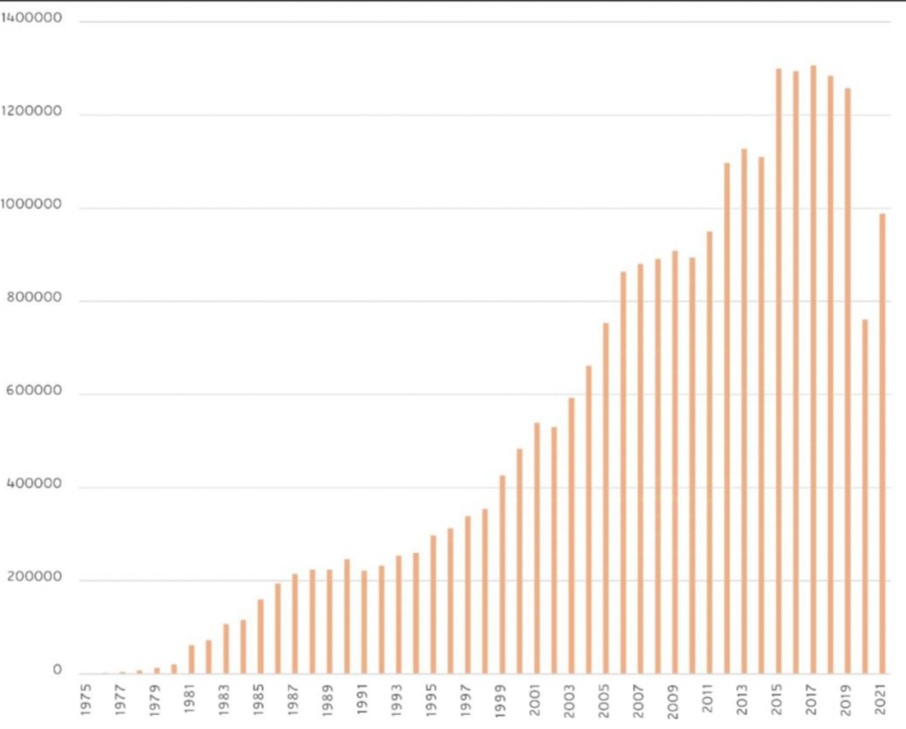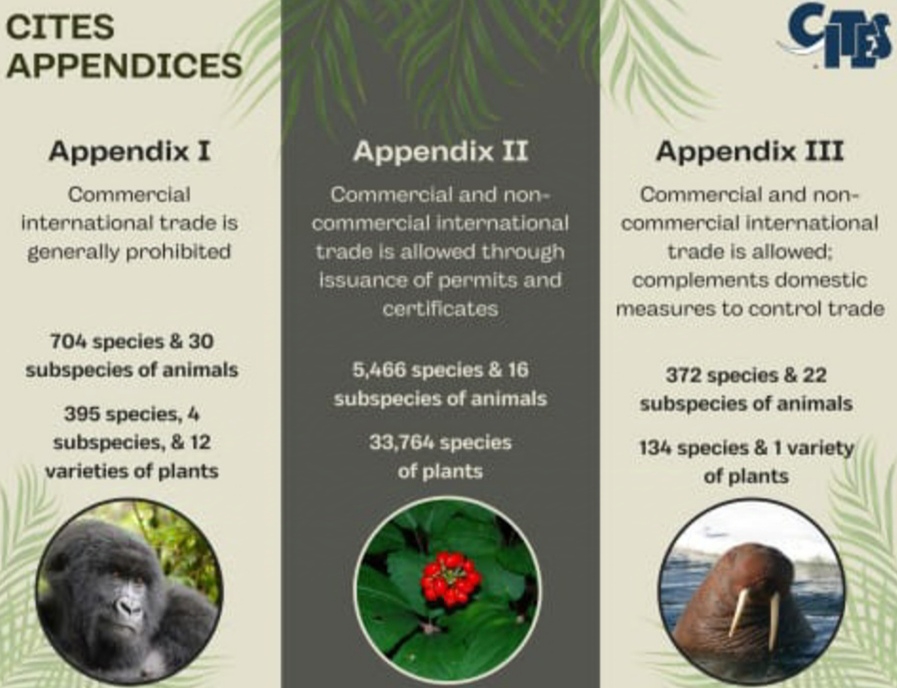INTRODUCTION
The Convention on International Trade in Endangered Species of Wild Fauna and Flora (CITES) is a Pivotal International agreement established in 1973 to protect endangered species from the adverse effects of illegal trade. As a multilateral treaty, CITES fosters collaboration among nations to conserve wildlife, promote biodiversity, and support sustainable trade practices. It has played a crucial role in preventing the extinction of numerous species while reinforcing global efforts to protect the natural world.
HISTORY AND DEVELOPMENT
CITES' journey is a testament to international cooperation for wildlife conservation:
• 1963: The International Union for Conservation of Nature (IUCN) initiated the call for global regulations on wildlife trade.
• 1973: The convention was signed by 80 countries in Washington, D.C.
• 1975: CITES came into effect, creating a framework to regulate the trade of endangered species.
• 1980s: Focused on combating illegal ivory and rhino horn trade to protect elephants and rhinoceroses.
• 1990s: Expanded its scope to endangered plants, such as orchids and cacti.
• 2000s: Tackled the illegal trade of exotic pets and timber.
• 2010s & beyond: Continues to address emerging wildlife trade issues and safeguard biodiversity.
CITES exemplifies how global collaboration can protect endangered species, preventing countless extinctions and ensuring sustainable use of wildlife resources.
KEY FUNCTIONS
CITES acts as a global mechanism for regulating the trade of endangered species through:
1. Regulatory Framework:
(i) Establishes guidelines for trade, ranging from permits for limited trade to outright bans based on a species' risk of extinction.
2. Species Classification:
Maintains a list of species under three Appendices:
(i) Appendix I: Species at risk of extinction; trade is strictly prohibited except in exceptional cases.
(ii) Appendix II: Species not yet endangered but could become so without regulation.
(iii) Appendix III: Species protected in specific countries, requiring international cooperation.
3. Permit System:
(i) Requires permits for importing, exporting, and re-exporting species, ensuring legal and sustainable trade.
4. Monitoring and Enforcement:
(i) Collaborates with countries to track trade, identify illegal activities, and implement countermeasures.
5. International Cooperation:
(i) Promotes shared strategies, technical support, and information exchange to enhance conservation efforts.
ACHIEVEMENTS OF CITES
CITES has demonstrated its impact through several success stories:
• Elephants: The ivory trade ban has significantly reduced poaching and allowed some populations to recover.
• Tigers: Strict regulations on tiger parts have slowed illegal trade and supported population recovery in some regions.
• Sea Turtles: The prohibition of international trade in all seven marine turtle species has facilitated population improvement.
• Rhinoceroses: Tight controls on rhino horn trade and anti-poaching efforts have yielded positive results in some areas.
• Medicinal Plants: Regulating trade and promoting sustainable practices have safeguarded valuable species while preserving traditional medicine.
CHALLENGES
Despite its successes, CITES faces obstacles such as:
• Persistent illegal wildlife trade.
• Inconsistent enforcement among countries.
• Loopholes and corruption.
• High demand for wildlife products in some markets.
CONCLUSION
CITES remains a cornerstone of global wildlife protection, striving to balance trade and conservation. While challenges persist, its framework continues to evolve, requiring ongoing cooperation from governments, organizations, and individuals to safeguard the planet's biodiversity for future generations.
IMAGES
Fig: Chart Comparison
Fig:CITES APPENDICES
Fig:AGREEMENT OF CITES
References
Written By
RAKSHA R K
Member
Shivi Forensics
+918576803105
shiviforensics@gmail.com











0 Comments